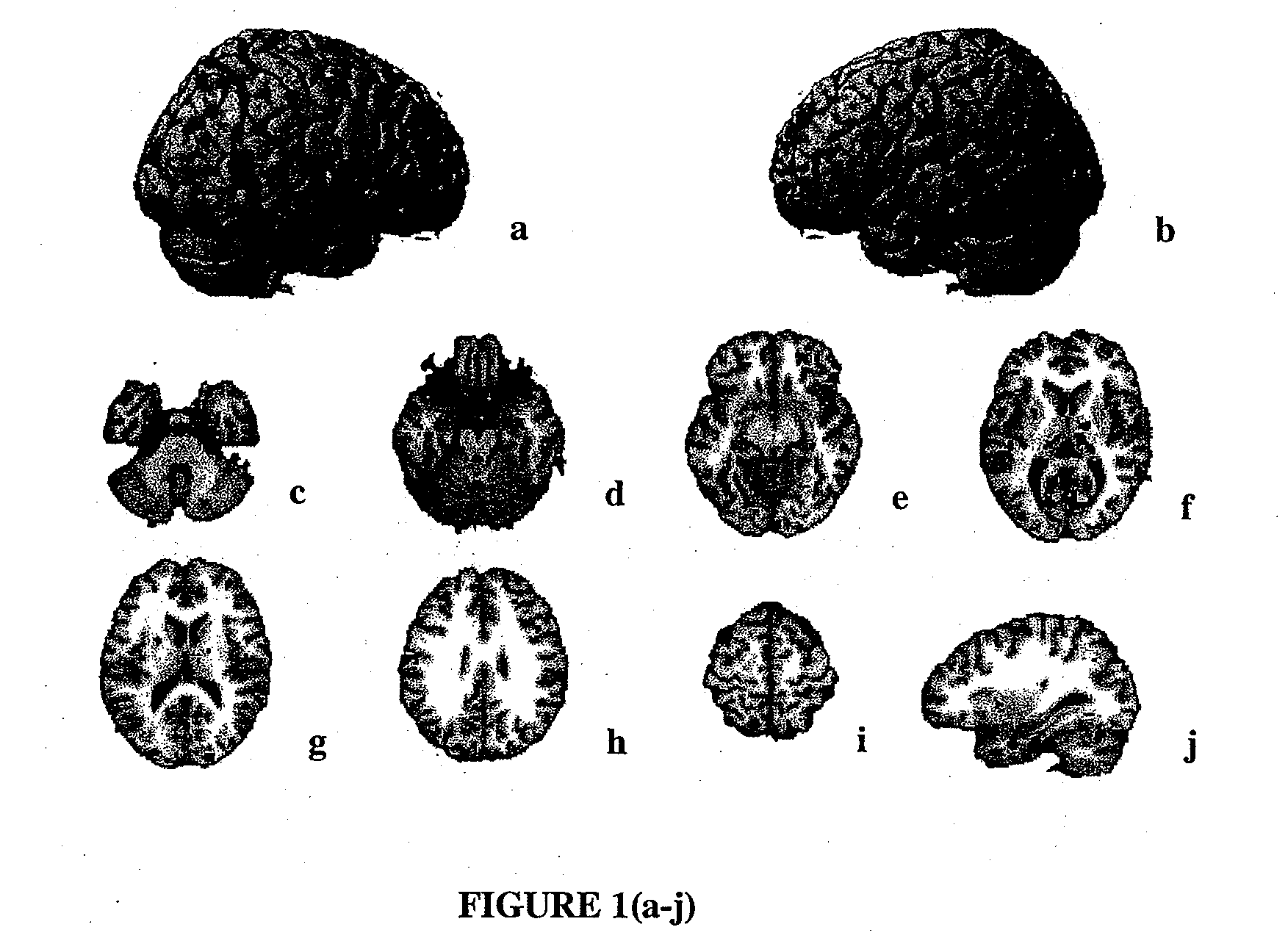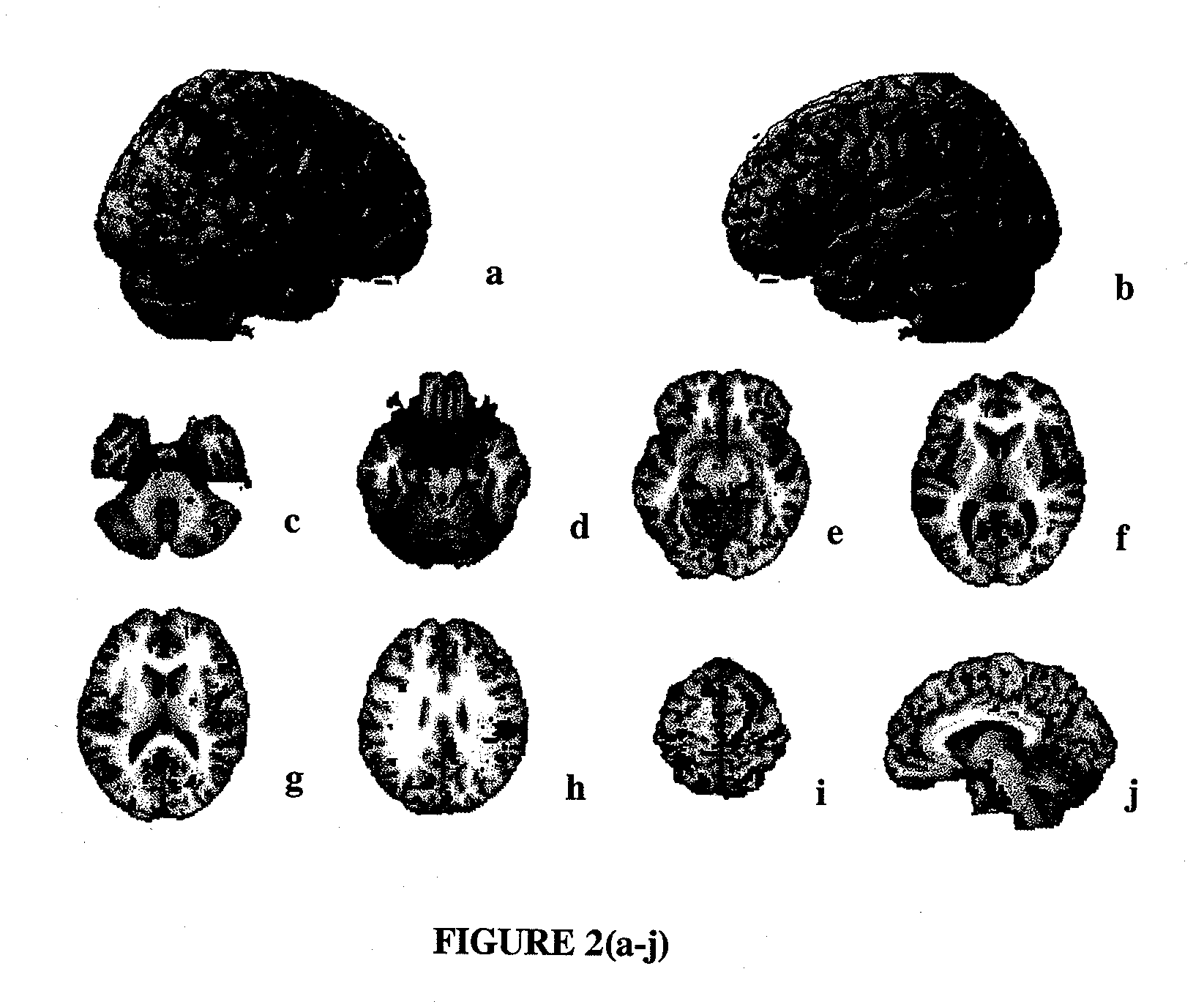Memantine For The Treatment Of Mild And Mild To Moderate Alzheimer's Disease
a technology for alzheimer's and memantine, applied in the direction of biocide, drug composition, nervous disorder, etc., can solve the problems of death, and no treatment that effectively prevents ad or reverses its symptoms and course is currently known, so as to prevent the decrease of glucose metabolism
- Summary
- Abstract
- Description
- Claims
- Application Information
AI Technical Summary
Benefits of technology
Problems solved by technology
Method used
Image
Examples
example 1
Randomized, Placebo-Controlled, Double-Blind Study of Memantine for the Treatment of Mild-to-Moderate Alzheimer's Disease
[0071]The study consisted of 1-2 weeks of single-blind placebo treatment followed by 24 weeks of double-blind treatment. Results were evaluated over seven clinical visits; at initial screening, baseline, and the end of weeks 4, 8, 12, 18 and 24.
[0072]Patient population and diagnosis. The study population consisted of outpatients who were at least 50 years old and were diagnosed with probable AD at screening according to the NINCDS-ADRDA criteria. These criteria consist of the following:[0073]dementia established by clinical exam and by the MMSE and further confirmed by neurological tests[0074]deficits in 2 or more areas of cognition[0075]progressive worsening of memory and other cognitive functions[0076]no disturbance of conscience[0077]onset between the ages of 40-90[0078]absence of systemic diseases, such as cardiovascular diseases, that could explain the cogni...
example 2
The Effects of Memantine on Brain Glucose Metabolism in Mild-to-Moderate Alzheimer's Disease
Methods
[0108]Drug treatment. As stated above, patients were randomized to receive 20 mg / day (10 b.i.d.) memantine or placebo for 24 weeks. PET scans were performed for 10 (5 receiving memantine and 5 receiving placebo) patients at baseline and at the end of week 24.
[0109]PET Scan Acquisition. Subjects were PET scanned at the University of California, Irvine Brain Imaging Center using a GE 2048-15B dedicated head scanner. Thirty slices at 6.5-mm intervals (15 in each of two sets) were obtained so as to cover the entire brain. Attenuation correction was performed by obtaining a transmission scan using a 68Ge pin source. A thermosetting plastic facemask was used to hold the subject stationary during the 60 minutes of total image acquisition. Scans were reconstructed with a blank and a transmission scan. PET image count was used for study analyses and adjusted for intrasubject global differences ...
PUM
| Property | Measurement | Unit |
|---|---|---|
| time | aaaaa | aaaaa |
| voxel size | aaaaa | aaaaa |
| voxel size | aaaaa | aaaaa |
Abstract
Description
Claims
Application Information
 Login to View More
Login to View More - R&D
- Intellectual Property
- Life Sciences
- Materials
- Tech Scout
- Unparalleled Data Quality
- Higher Quality Content
- 60% Fewer Hallucinations
Browse by: Latest US Patents, China's latest patents, Technical Efficacy Thesaurus, Application Domain, Technology Topic, Popular Technical Reports.
© 2025 PatSnap. All rights reserved.Legal|Privacy policy|Modern Slavery Act Transparency Statement|Sitemap|About US| Contact US: help@patsnap.com


